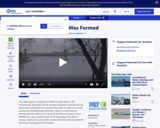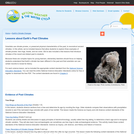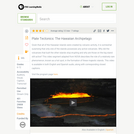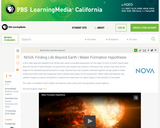
This video segment adapted from KET's Where the River Bends demonstrates how climate change and glacier movement during the Ice Ages destroyed the old Teays River and created the Ohio River, Kentucky's northern border.
- Subject:
- Applied Science
- Ecology
- Environmental Science
- Forestry and Agriculture
- Geoscience
- Life Science
- Physical Science
- Space Science
- Material Type:
- Lecture
- Provider:
- PBS LearningMedia
- Provider Set:
- Teachers' Domain
- Author:
- KET
- The William and Flora Hewlett Foundation
- Date Added:
- 08/22/2008






